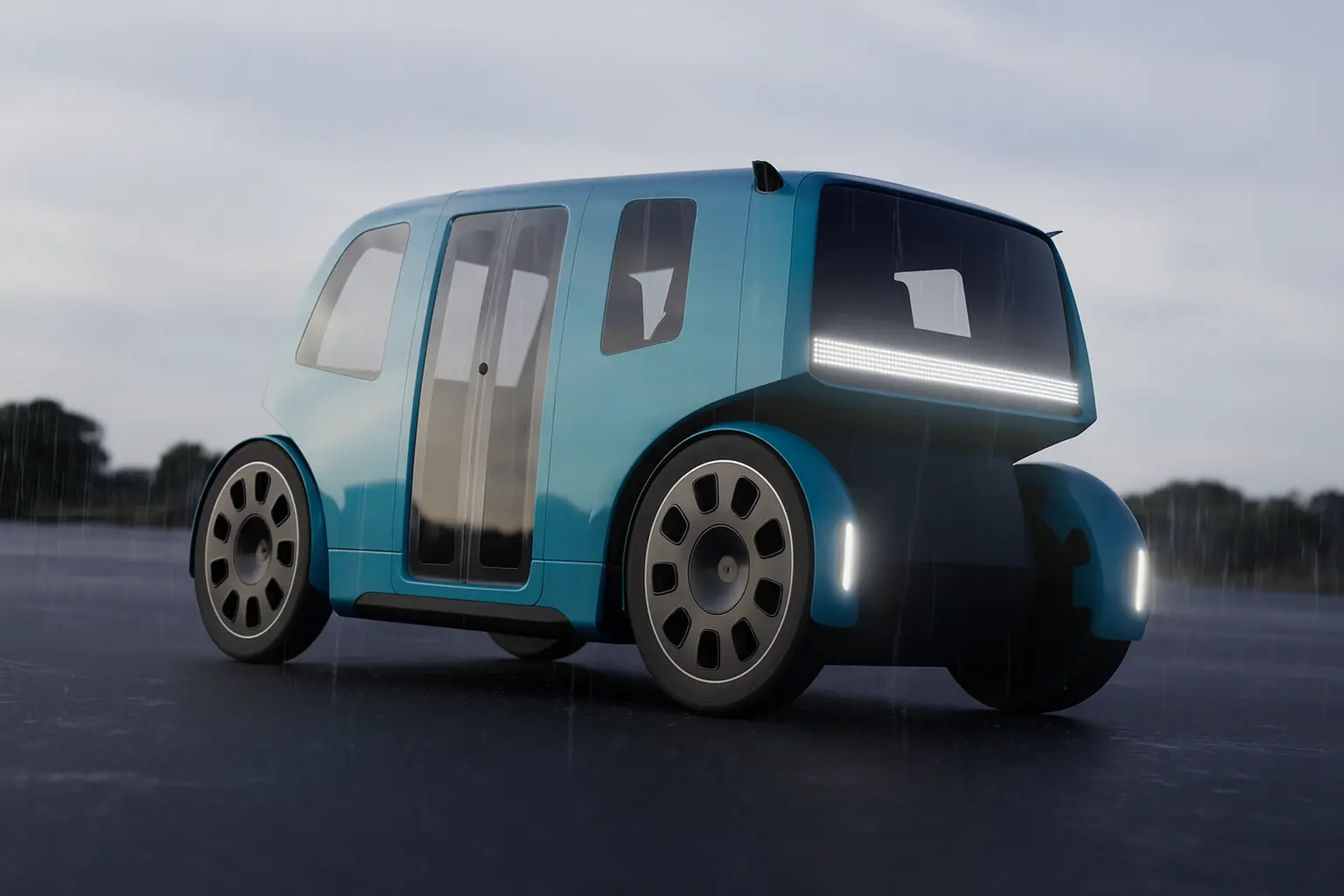From Rain to Robotaxis: Why Europe’s 2026 Launch Needs a Low-Grip Safety Revolution
From London to Berlin, 2026 is shaping up as the year robotaxis move from pilot projects to paid, passenger‑carrying services. Policy momentum in the United Kingdom, an updated Level‑4 legal framework in Germany, and new industry alliances — notably Lyft teaming with Baidu — are setting the stage. Yet one unresolved hazard could limit scale and public trust: low‑grip conditions caused by heavy rain, standing water, snow and ice. This article reviews what’s coming in 2026, why adverse weather still defeats today’s autonomy stacks, and how Easyrain’s DAI, AIS and ERC systems can make robotaxis safer in Europe’s toughest climates.
2026: Europe’s Robotaxi Moment
The UK’s new legal framework for self‑driving services clears the way for paid operations as early as 2026, according to the government’s own roadmap (gov.uk). Germany, for its part, already permits Level‑4 operations in defined areas under its national law, enabling commercial services once operators secure approvals from federal and local authorities (BMDV).
Against that backdrop, ride‑hailing platforms are aligning with autonomy specialists. Lyft plans to deploy Baidu’s fully electric Apollo RT6 robotaxis in the UK and Germany starting in 2026 (pending regulatory sign‑off), building on its European footprint following the acquisition of FREENOW (Reuters; Lyft). Uber continues to expand AV integrations globally across multiple partners, while Waymo scales U.S. robotaxi service areas and Tesla explores ride‑hailing and autonomy initiatives.
Why Low‑Grip Is the Achilles’ Heel of Autonomy
Today’s autonomous driving stacks are excellent at perception and planning in fair weather. But they degrade when friction falls and visibility suffers. Cameras lose lane contrast under spray; lidar returns are attenuated and cluttered by rain and snow; radar is robust to precipitation but can lack spatial resolution. Critically, most stacks do not estimate available tire‑road friction in real time with the precision needed to adapt speed, following distance, and braking before grip collapses — especially on water‑logged surfaces that can trigger aquaplaning.
Independent testing underscores the gap. In controlled studies of production driver‑assistance systems, moderate to heavy rain significantly increased lane departures and collision rates, even at suburban speeds — a warning flag for any autonomy stack that inherits similar sensing and control assumptions (AAA). Regulators also continue to scrutinize AV performance in poor visibility and low‑adhesion scenarios, emphasizing that safe operation must extend beyond blue‑sky ODDs (NHTSA).
Europe’s climate compounds the challenge. Compared with Sun Belt U.S. cities, many European metros see frequent heavy rain, standing water, icy mornings, plowed‑snow residue, polished cobblestone, and road paint with variable micro‑texture — all of which reduce μ and confuse sensors. Without reliable prediction of low‑grip pockets ahead (puddles, black ice, slush), robotaxis risk late interventions, longer stopping distances, and emergency maneuvers on surfaces that may no longer support them.
A Practical Safety Path for 2026: Easyrain’s DAI + AIS + ERC
If Europe wants robotaxis that work year‑round, autonomy needs a dedicated low‑grip safety layer that predicts, prevents, and shares risk in real time. Easyrain’s technology suite provides that layer in three parts:
1) Predict the risk — DAI (Digital Advanced Information)
DAI is a family of predictive virtual sensors that infer road‑tire conditions from standard vehicle signals plus on‑board perception. It delivers an “early warning” μ‑risk map to the autonomy stack so it can adapt before grip collapses. Key modules include:
- Aquaplaning: anticipates water‑film hazards in ruts and puddles to trigger speed and trajectory adaptations.
- Snow & Ice: detects winter low‑μ conditions where cameras and lane markings are unreliable.
- Ground: classifies surface types and micro‑texture to refine friction forecasts.
- iTPMS & Tire Wear: monitor inflation and wear to keep tire performance within the ODD guardrails.
- Wheel Misalignment: catches alignment issues that degrade stability and braking on slick surfaces.
2) Prevent the loss — AIS (Aquaplaning Intelligent Solution)
When heavy wet conditions appear, AIS provides an active safety intervention to defeat aquaplaning — a scenario where ABS/ESC cannot restore grip because the tire rides on a water film. AIS is engineered to remove the water film just ahead of the contact patch, restoring the tire‑road contact needed for steering and braking. For robotaxis, AIS adds a deterministic safeguard in the worst rain events that perception‑only stacks cannot reliably overcome.
3) Share and scale — ERC (Easyrain Cloud)
ERC aggregates vehicle‑borne low‑grip detections (from DAI/AIS and fleet signals) to build a live, privacy‑preserving risk map. This connected layer lets operators reroute fleets away from emerging aquaplaning hotspots, issue speed caps per road segment, and feed predictive analytics back into autonomy planning. As ERC density grows across cities, every robotaxi benefits from the first one that encounters the hazard.
How operators can integrate by 2026
- Software‑first uplift: Integrate DAI virtual sensors into the ADS safety supervisor and motion planner to enable weather‑aware speed, headway and routing.
- Hardware optioning: Specify AIS on vehicles destined for rain‑prone corridors and motorway ruts; validate actuation timing within the worst‑case puddle profiles in local ODDs.
- Connected operations: Connect fleets to ERC so detections propagate city‑wide, improving predictions for all vehicles, all day.
Europe has the regulations and partnerships to start robotaxi services in 2026. To scale safely through the continent’s rain, slush and ice, operators need predictive low‑grip intelligence and an active countermeasure to aquaplaning. Easyrain’s DAI, AIS and ERC provide precisely that — a practical safety stack designed for real‑world Europe.
Sources:
- UK Government (Automated Vehicles Act & roadmap): gov.uk
- German Ministry of Digital & Transport (Level-4 legislation): bmdv.bund.de
- Lyft: lyft.com
- Baidu: baidu.com
- Uber: uber.com
- Waymo: waymo.com
- Tesla: tesla.com
- Reuters (industry coverage): reuters.com
- AAA (driver assistance testing): aaa.com
- NHTSA (autonomous vehicle regulation & safety): nhtsa.gov







